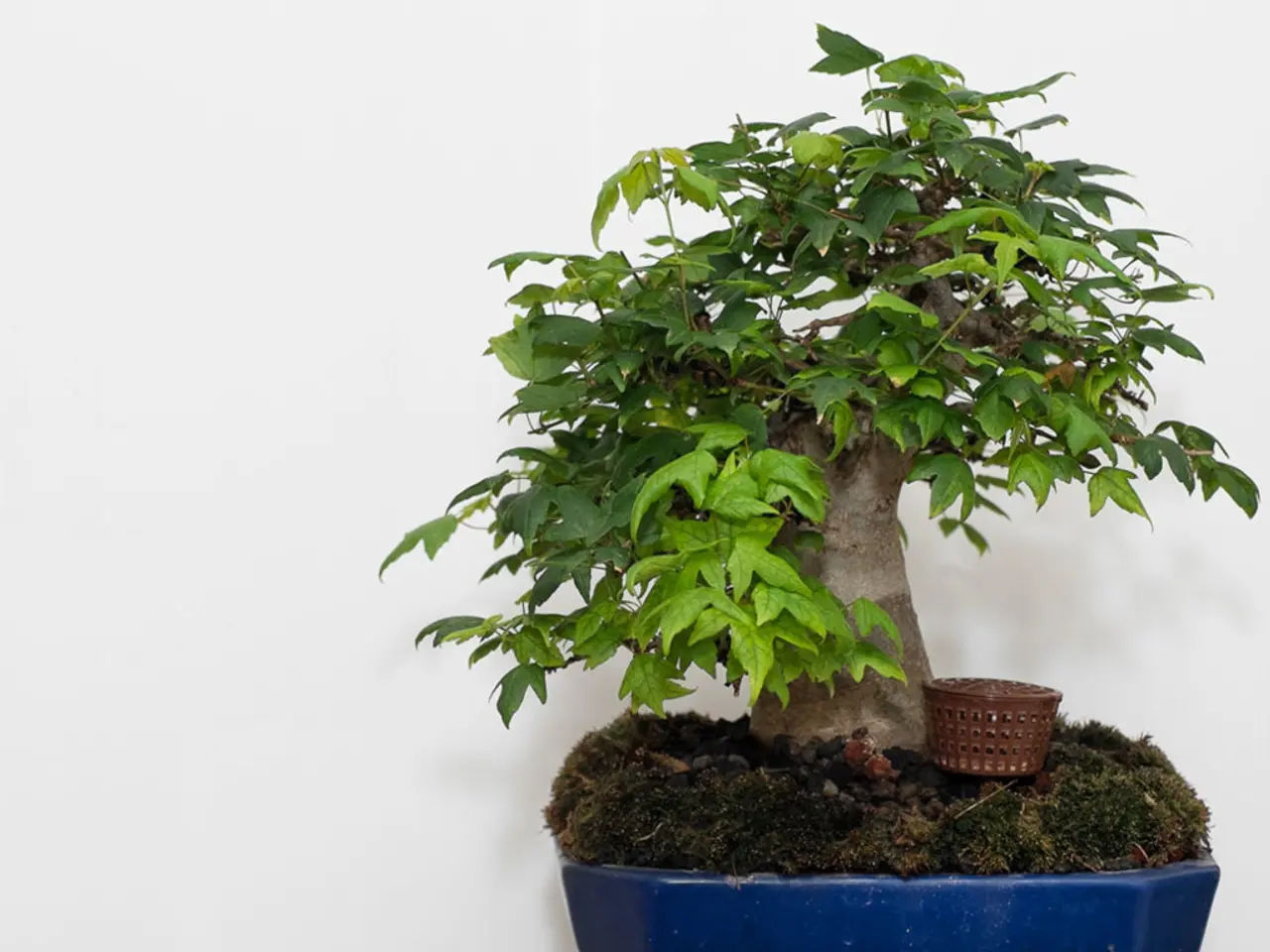Ideal Seasons for Bonsai Re-potting: Factors to Consider Based on the Calendar
In the intricate world of bonsai cultivation, repotting plays a crucial role in maintaining the health and vitality of these miniature marvels. This process, when done correctly, can stimulate growth, prevent stagnation, and ensure that your bonsai tree thrives.
Synchronizing pruning and repotting schedules can minimize stress and promote healthy growth. It is recommended to transfer the tree to a new pot during repotting, allowing for a more thorough examination and pruning of the roots.
During the active growth phase, repotting can be a pivotal moment to provide fresh nutrients and a roomier pot. However, it's essential to respect the natural growth cycles of your bonsai. Repotting during the dormant season can provide an opportunity for pruning and repotting to occur simultaneously, minimizing stress.
In ideal conditions, repot your bonsai tree every 2-5 years, depending on species and growth rate, to prevent root bound conditions and guarantee peak health. A few species such as Chinese Elm and Ficus can thrive in the same pot for extended periods, but even these species may benefit from occasional root pruning to maintain peak health.
Essential bonsai techniques to keep in mind when pruning before repotting include removing dead or damaged roots, trimming back roots, pruning branches, cutting back leggy growth, and making precise, clean cuts. Pruning the roots and branches before repotting stimulates healthy growth and prevents stagnation.
When repotting during extreme weather conditions, bonsai trees face heightened stress, potentially leading to root shock, nutrient deficiencies, and increased susceptibility to pests and diseases, ultimately jeopardizing the tree's overall health and stability. Careful consideration must be given to the specific needs of tropical species during repotting to avoid disrupting their ecosystem.
The ideal repotting period for bonsai varies by species. Deciduous bonsai (like oak) should be repotted in early spring, just as buds begin to swell but before new growth starts. This timing takes advantage of dormancy while sap is rising, making it easier for the tree to recover. Evergreen bonsai are also best repotted in early spring to early growing season, when the tree is still relatively dormant or just beginning to push new growth. This helps minimize stress and promotes root recovery. Tropical bonsai or tropical houseplants are best repotted during their active growing season, typically summer, when root growth is vigorous.
Tropical species such as Ficus and Bougainvillea thrive in temperatures ranging from 65°F to 85°F (18°C to 30°C) and humidity levels between 50% to 80%. Understanding the local climate's influence on bonsai tree growth cycle is essential for determining the ideal repotting time.
In regions with distinct seasonal patterns, avoiding repotting during periods of distress can minimize the risk of complications and promote a healthy, thriving bonsai. It's tempting to repot bonsai trees anytime with a controlled climate, but it's vital to respect their natural growth cycles to prevent stress and guarantee peak well-being.
The art of bonsai cultivation is a delicate dance of timing and consideration, and by embracing the intricate harmony of species-specific needs, climate variations, and dormancy periods, one may decipher the secrets of successful repotting and coax forth the hidden beauty within these miniature marvels.
The home-and-garden lifestyle incorporates the art of bonsai, where repotting plays a significant role in ensuring a thriving home-grown bonsai tree. In ideal conditions, repotting techniques involve pruning the roots and branches for stimulating growth before transferring the tree to a fresh, roomier pot.
By maintaining a schedule that considers the pruning and repotting needs of the bonsai tree, lifestyle enthusiasts can promote healthy growth in their home-and-garden bonsai collection.




